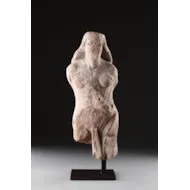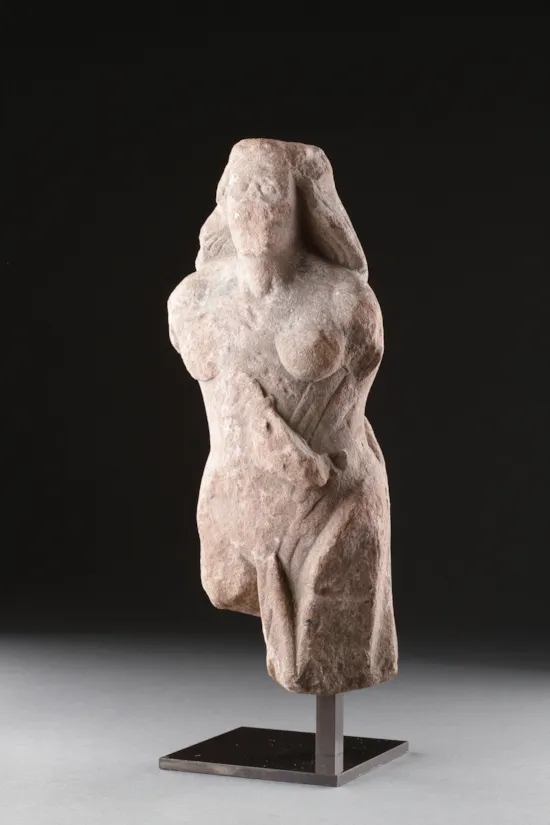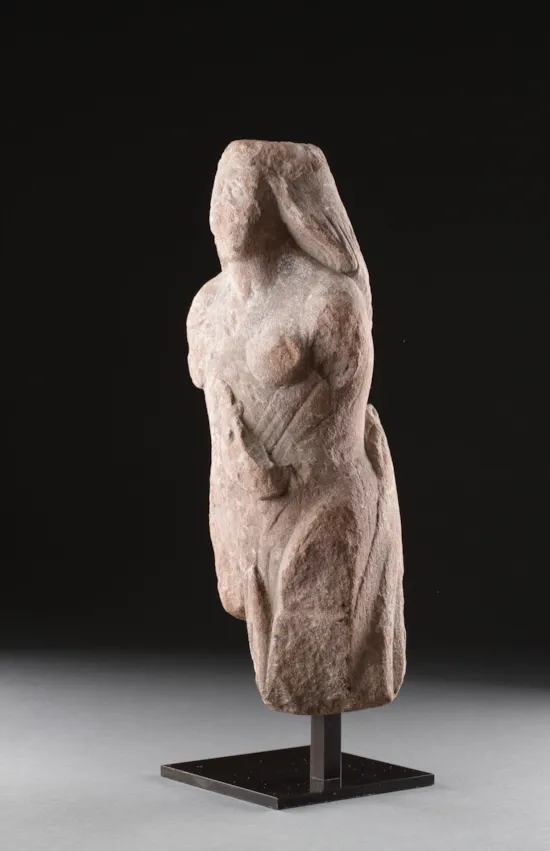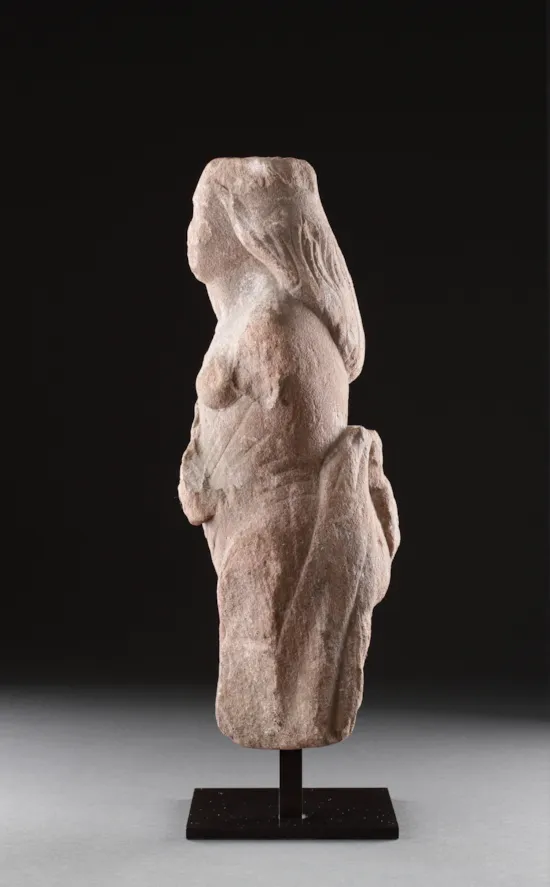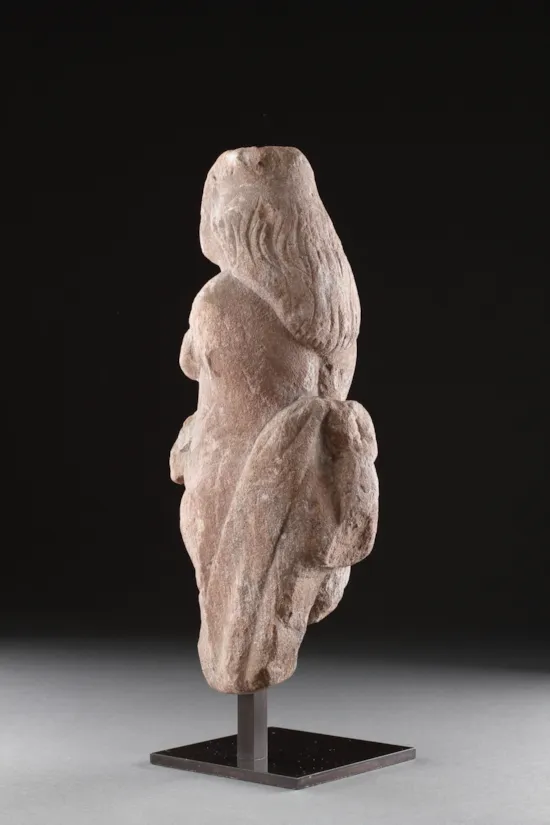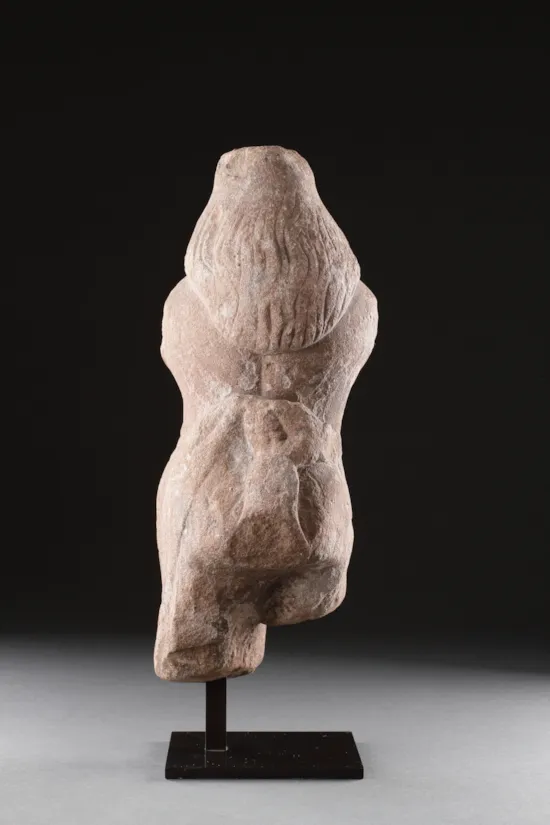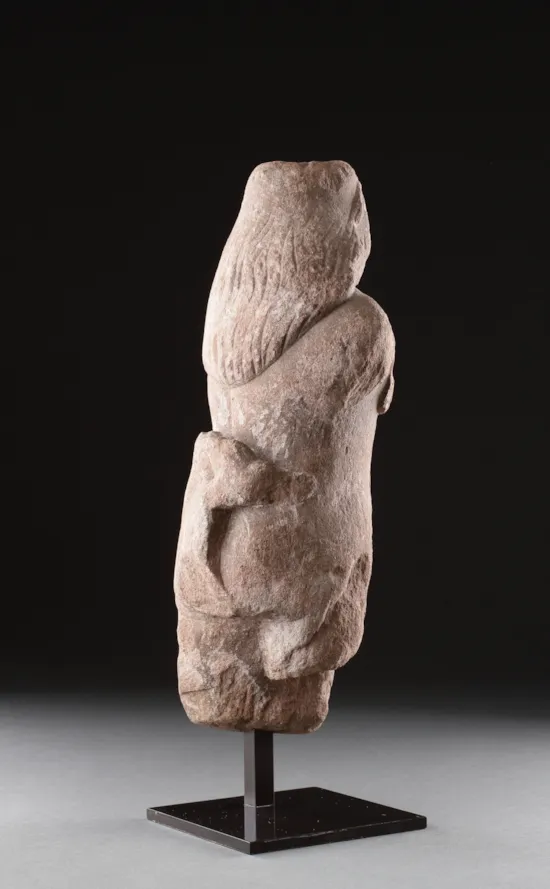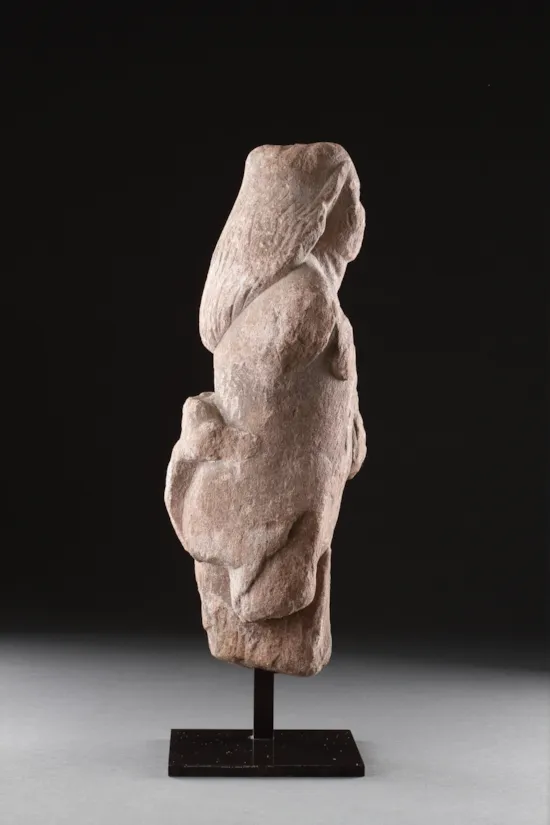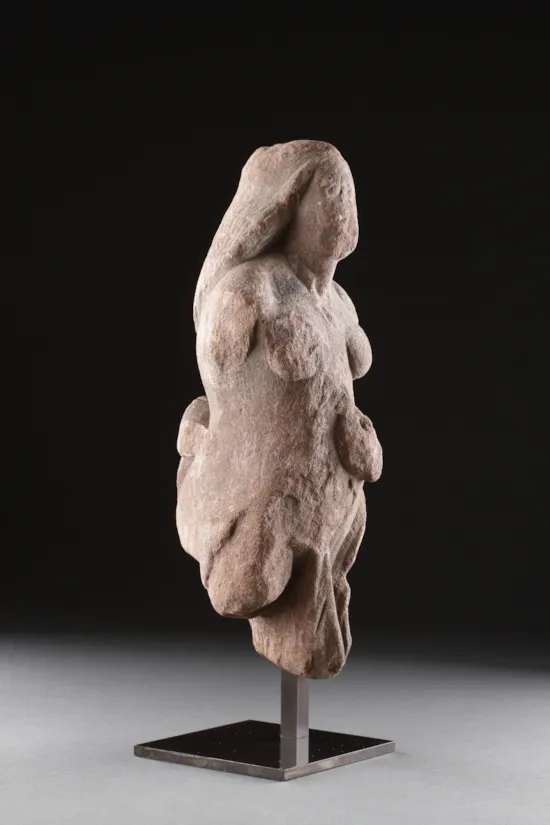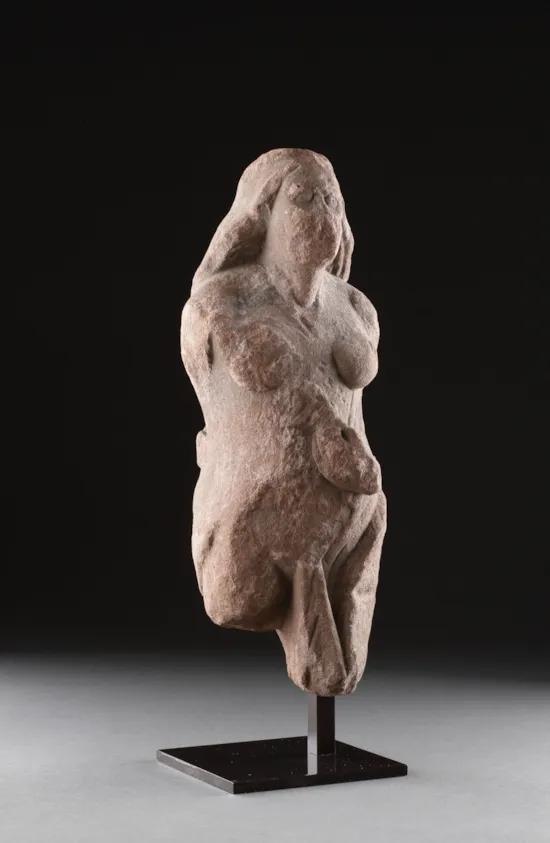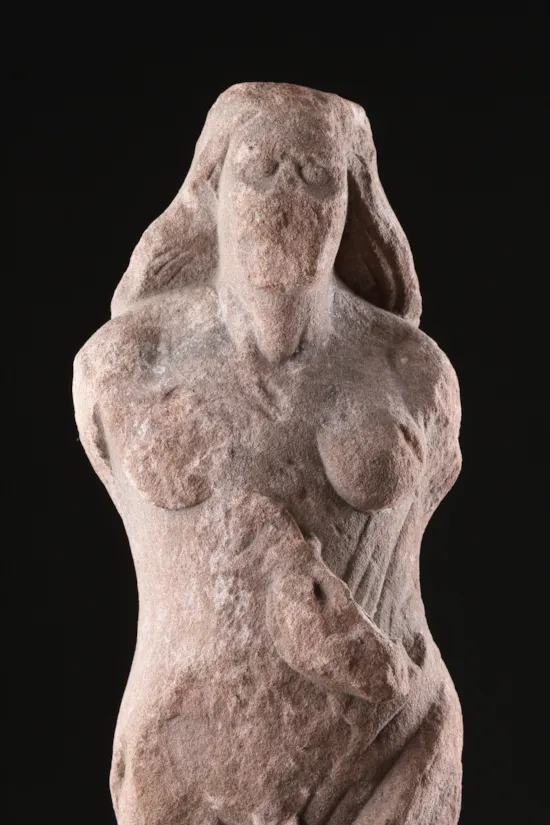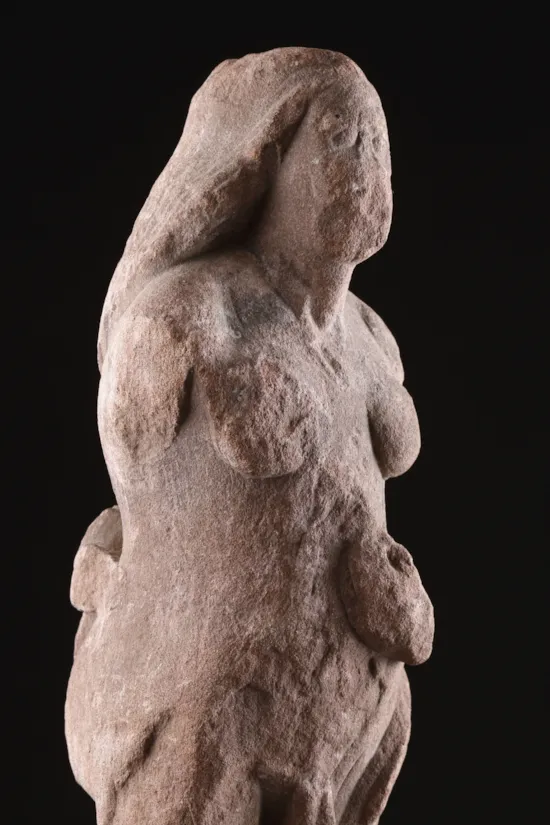A Rare Ancient British Celtic Carved Red Sandstone Statuette of a Goddess
A Rare Ancient British Celtic Carved Red Sandstone Statuette of a Goddess with Long Flowing Hair Wearing a Loosely Draped Tunic Her Breasts Exposed Perhaps Representing the Deity ‘Brigantia’
An indentation to the top of her head for offerings or libations
1st - 2nd Century AD
Size: 33cm high, 12cm wide, 12cm deep - 13 ins high, 4¾ ins wide, 4¾ ins deep / 37.5cm high - 14¾ ins high (with base)
An indentation to the top of her head for offerings or libations
1st - 2nd Century AD
Size: 33cm high, 12cm wide, 12cm deep - 13 ins high, 4¾ ins wide, 4¾ ins deep / 37.5cm high - 14¾ ins high (with base)
A Rare Ancient British Celtic Carved Red Sandstone Statuette of a Goddess with Long Flowing Hair Wearing a Loosely Draped Tunic Her Breasts Exposed Perhaps Representing the Deity ‘Brigantia’
An indentation to the top of her head for offerings or libations
1st - 2nd Century AD
Size: 33cm high, 12cm wide, 12cm deep - 13 ins high, 4¾ ins wide, 4¾ ins deep / 37.5cm high - 14¾ ins high (with base)
An indentation to the top of her head for offerings or libations
1st - 2nd Century AD
Size: 33cm high, 12cm wide, 12cm deep - 13 ins high, 4¾ ins wide, 4¾ ins deep / 37.5cm high - 14¾ ins high (with base)
The Celtic Yorkshire goddess Brigantia, the ‘High One’ was the personification of a hegemony of tribes, the Brigantes. Unified under her protection their territory stretched from present day Southern Yorkshire and Lancashire into Southern Scotland. Brigantia was a goddess of a pastoral people to whom flocks and herds were of prime importance, but she also had influence in the sphere of warfare although this was usually by means of magic rather than through physical strength. Celtic belief in the power of the Goddess was very pronounced and they were deeply concerned with her importance in both fertility and maternity. The Celtic goddess was at once mother, warrior, virgin, witch, conveyor of fertility, of strong sexual appetite, giver of prosperity to the land and protectress of the flocks and herds. More static and archaic than the gods she remained tied to the land for which she was responsible, and whose striking features seemed to her worshippers to be manifestations of her power and personality.
The Celts frequently traced their tribal descent back to a divine ancestor and they invoked the goddess Brigantia as wholly theirs, but by the 3rd century AD she appears clad as Roman Minerva and associated with the deity Victory in her role as a war goddess. By that time the Romans and the Celts had assimilated their belief in her control by magical means of the outcome of any battle.
The Celts frequently traced their tribal descent back to a divine ancestor and they invoked the goddess Brigantia as wholly theirs, but by the 3rd century AD she appears clad as Roman Minerva and associated with the deity Victory in her role as a war goddess. By that time the Romans and the Celts had assimilated their belief in her control by magical means of the outcome of any battle.
Reputedly found near Hadrian’s Wall
Ex Private British collection formed in the Early 20th Century
Ex Private London collection
cf: Similarities can be seen in a Bronze Female Figurine found in Culver Hole Cave Glamorganshire. Published in Pagan Celtic Britain by Dr Anne Ross pg. 211
Ex Private British collection formed in the Early 20th Century
Ex Private London collection
cf: Similarities can be seen in a Bronze Female Figurine found in Culver Hole Cave Glamorganshire. Published in Pagan Celtic Britain by Dr Anne Ross pg. 211
A Rare Ancient British Celtic Carved Red Sandstone Statuette of a Goddess
